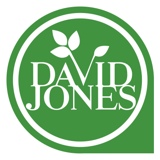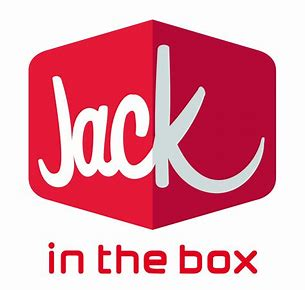Information
-
Name of audit (brand and product category)
-
Review conducted on
-
Findings presented to buyer on
-
Findings presented to vendor on
-
Prepared by
Product Details
-
Brand name
-
Product type
-
Product description (eg. range of men's shirts in various sizes and colors)
-
Add media
-
Group (number and name)
-
Department (number and name)
-
Track number(s)
-
Barcode number(s)
-
Aggregate unit sales in baseline year
-
Baseline year
Vendor Details
-
Vendor number
-
Vendor name
-
Vendor contact details (name, address, phone)
Packaging Details
-
Same packaging must be used for all track numbers under review
Primary packaging (ie. packaging provided to customer at point of sale)
-
Description of primary packaging
-
Add media
-
Description of materials used, by type and weight (per unit)
-
Cardboard
-
Cardboard
-
Weight
-
Dimensions (H x W x D)
-
Paper
-
Paper
-
Weight
-
Dimensions (H x W x D)
-
Soft Plastic
-
Soft Plastic
-
Weight
-
Dimensions (H x W x D)
-
Hard Plastic
-
Hard Plastic
-
Weight
-
Dimensions (H x W x D)
-
Glass
-
Glass
-
Weight
-
Dimensions (H x W x D)
-
Metals
-
Metals
-
Weight
-
Dimensions (H x W x D)
-
Other
-
Weight
-
Dimensions (H x W x D)
-
Swing tags
-
Number of swing tags
-
Pins
-
Number of pins
-
Clips
-
Number of clips
-
Are these materials made from recycled materials?
-
Are these materials made from recyclable materials?
-
Are these materials easy to manage within existing curbside recycling systems?
Secondary packaging (ie. packaging used in the distribution of individual units, such as plastic sleeves for apparel)
-
Description of secondary packaging
-
Add media
-
Description of materials used, by type and weight (per unit)
-
Cardboard
-
Cardboard
-
Weight
-
Dimensions (H x W x D)
-
Paper
-
Paper
-
Weight
-
Dimensions (H x W x D)
-
Soft Plastic
-
Soft Plastic
-
Weight
-
Dimensions (H x W x D)
-
Hard Plastic
-
Hard Plastic
-
Weight
-
Dimensions (H x W x D)
-
Other
-
Weight
-
Dimensions (H x W x D)
-
Hangers
-
Number of hangers
-
Pins
-
Number of pins
-
Clips
-
Number of clips
-
Are these materials made from recycled materials?
-
Are these materials made from recyclable materials?
-
Are these materials easy to manage within David Jones' existing recycling systems?
Distribution packaging (ie. packaging used in the distribution of multiple units, such as boxes)
-
Description of distribution packaging
-
Add media
-
How many individual units in each box or sleeve?
-
Description of materials used, by type and weight (per unit)
-
Cardboard
-
Cardboard
-
Weight
-
Dimensions (H x W x D)
-
Paper
-
Paper
-
Weight
-
Dimensions (H x W x D)
-
Soft Plastic
-
Soft Plastic
-
Weight
-
Dimensions (H x W x D)
-
Hard Plastic
-
Hard Plastic
-
Weight
-
Dimensions (H x W x D)
-
Packing beads
-
Weight
-
Dimensions (H x W x D)
-
Other
-
Weight
-
Dimensions (H x W x D)
-
Are these materials made from recycled materials?
-
Are these materials made from recyclable materials?
-
Are these materials easy to manage within David Jones' existing recycling systems?
Sustainable Packaging Guideliness - Assessment Template
-
Key considerations for each of the 12 SPG Strategies
A. Maximise water and energy efficiency B. Minimise materials at source
-
1. Is the packaging necessary?
-
2. Has the packaging been designed to minimise the amount of material necessary to suit the required functionality? (eg. Minimum number of separate layers. Minimum packaging weight?)
-
3. Are there any options to further reduce materials?
-
3a. What are these options and what is the likely impact of these options on functionality, product protection and consumer safety?
-
4. Does the design of the packaging allow for the product to be completely consumed?
-
5. Have your suppliers taken steps to optimise the energy efficiency of production processes?
-
If yes, please provide evidence
-
6. Have your suppliers taken steps to optimise the water efficiency of production processes?
-
If yes, please provide evidence
-
7. Have your suppliers considered using renewable energy (or green power off the grid) for production processes?
-
Comments
C. Use recycled materials
-
8. What is the estimated amount of recycled material in this packaging?
-
9. Could alternative materials be used to increase amount of recycled content and/or improve environmental outcomes?
-
If yes, why were these materials not used?
-
10. Is it possible to use more post-consumer recycled material?
-
If yes, please outline rationale
-
11. Has the business raised any concerns about the use of recycled materials?
-
12. If a recycling claim is made, does the claim meet the minimum standard specific in AS/NZS14041?
-
Comments
D. Use renewable materials
-
13. What is the potential for (and availability of) materials from a renewable source to be used?
-
14. Are any of the materials currently used from renewable sources?
-
14a. If yes, are these raw materials grown and harvested using sustainable farming or forestry practices?
-
Comments
E. Minimise environmental risk
-
15. Have you applied conventional risk management principles in the selection of substances for packaging applications?
-
16. Does the packaging meet Australian and/or international standards n relation to the levels of potentially toxic and harmful substances?
-
Comments
F. Use materials from responsible suppliers
-
17. Are raw materials sourced from suppliers with documented environmental management systems?
-
18. Do you give preference to suppliers that are signatories to the Covenant?
-
19. Are you and/or your suppliers engaged in a sustainability networking program?
-
Comments
G. Design for transport
-
20. Can the distribution packaging be reduced or eliminated through redesign of primary or secondary packaging?
-
21. Is this a "floor-ready" category?
-
21a. Could this category be transitioned to the "floor-ready" program?
-
22. Have light weight and/or source reduction strategies been applied to packaging design?
-
23. Can the consumer packaging be redesigned to maximise the efficiency of distribution packaging or pallet configuration?
-
24. Can pallet configuration be further optimized? (eg. height of pallet, configuration of pallet)
-
25. Is there an opportunity to move to more efficient vehicles, hybrid vehicles or renewable energy for your distribution fleet?
-
26. Are there backloading opportunities for packaging or waste once deliveries have been made? Can your distribution network aid the recovery of used packaging?
-
Comments
H. Design for reuse
-
27. Have the environmental benefits of single-use packaging been considered and compared?
-
28. Is the packaging reusable?
-
28a. If it is reusable, has there been confirmation that the reused packaging is fit-for-purpose and presents no risk to the product, or to the health and safety of supply chain workers, or to consumers?
-
29. Has the packaging been designed to maximise to number of return trips during reuse?
-
30. Can the packaging be reconditioned or recycled once it is no longer suitable for reuse?
-
Comments
I. Design for recovery
-
31. What percentage of the packaging (by weight) recyclable?
-
32. Are all materials used serviced by curbside recycling programs in major metropolitan areas?
-
33. How many different materials are used in this packaging? Please list materials used
-
34. Are any of these materials bonded together or layered (packaging within packaging) making it difficult to recycle?
-
34a. If yes, please describe
-
34b. If yes, is there an alternative format/method?
-
35. Has the packaging been designed to minimise the impact that any components (closures, labels, sleeves, handles) have on recycling process?
-
35a. If no, please describe
-
35b. If no, is there an alternative format/method?
-
36. Have compostible materials been used?
-
36a. If yes, has reference been made to industry standards, such as PACIA's policy document titled "Using Degradable Plastics in Australia"
-
36b. If yes, is this material referred to by the Australian Council of Recyclers?
-
37. Have you developed and implemented appropriate labeling on packaging to encourage consumers to recycle or compost packaging?
-
Comments
J. Design for litter reduction
-
44. Where, when and how will the product be consumed, and by whom?
-
45. Is the packaging likely to be consumed away from home and therefore have a propensity to become litter?
-
45a. How many separate components could end up as litter? Please list components
-
45b. Has the packaging been designed to minimise the number of separate components, that could become litter?
-
45c. What steps have been taken to reduce the occurrence of this packaging entering the litter stream?
-
45d. Have options been considered for away-from-home recycling as part of an overall littler abatement program?
-
45e. Has appropriate information been provided in relation to litter prevention on all packaging for products that are likely to be consumed away-from-home
-
46. Do you provide advice for consumers on the packaging or label to encourage appropriate disposal or recovery?
-
Comments
K. Design for consumer accessibility
-
47. Has the consumer's ability to access the product within the packaging been considered in the design process?
-
48. Have you considered whether the level of information on the packaging ensures that the consumer is aware of its contents and how to open the package?
-
49. Who is the main demographic of consumer who will use this product? Are there are limiting factors that affect this segment? Is the packaging considerate of these constraints?
-
50. Can changes be made to improve the ability of consumers to use the product, without compromising safety, security or quality?
-
51. Can changes be made to reduce the requirement for the use of scissors and knives, to open the packaging?
-
Comments
L. Provide consumer information about sustainability?
-
52. Are there opportunities to incorporate marketing / educational messages into the packaging?
-
53. Will any environmental claims be made about the packaging?
-
54. Has information been provided to on the packaging to encourage recycling? (eg. The Modius loop)
-
55. Has the voluntary Plastics Identification Code been used on plastic packaging?
-
Comments
Summary
-
Provide an overview of areas where no further improvements can be made to the design of this packaging, without detrimental impact on security, safety or quality
-
Provide an overview of opportunities / recommendations to enhance the sustainability of this packaging, through design improvements
-
Review and recommendations issued to buyer?
-
Buyers feedback
-
Review and recommendations issued to supplier?
-
Suppliers feedback
-
Comments








